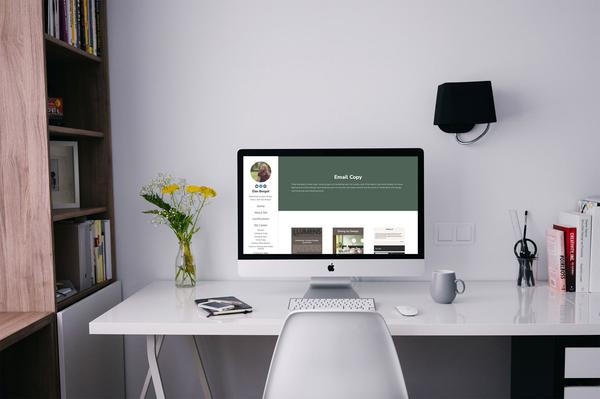
Building Your Journalist Portfolio: The Ultimate 2024 Guide

Sam Hindman
Published onLet's face it: The days of boring, lengthy CVs are over. Nowadays, if you want to be on your future employers' radar, your online journalism portfolio is where you need to concentrate your precious time and energy.
That being said, creating a portfolio can be difficult without proper guidance. What are the best websites to use? How do you decide what clips to showcase? Don't worry- we've got you covered.
In this guide, we'll show you how to build a journalism portfolio that shatters expectations and blows away the competition. Building your portfolio website doesn't have to be tedious; it can feel incredibly fulfilling when done right.
So, whether you're a university student, a seasoned professional, or a curious writer looking to change fields, here's everything you need to know about building a portfolio website from scratch in 2024.
What Makes Having A Journalism Portfolio So Important?
As you may well know, journalism is not a medium based on credentials. While things like the college you attended and the previous jobs you've held can be helpful stepping stones along your path, they aren't what people consider when deciding whether or not to hire you.
People are really interested in the content you've produced. Where have your articles been published? What kind of writing do you typically create? An online journalism portfolio answers those questions exactly.
Unfortunately, not all hiring managers will bother spending their time Googling your name. Instead, they want your best work readily available. This is precisely the kind of convenience that a portfolio can provide exactly this convenience!
The Qualities Of A Strong Journalism Portfolio
Now that you know why having a portfolio is so important, you need to learn how to create one. Let's examine some of the most essential qualities of a strong portfolio!
Make Sure It's Easily Navigated
Having a portfolio is essential for keeping track of your published work. If you've been in the business for a while, you probably know that journalists tend to bounce around. Instead of making your projects challenging to find, a portfolio can arrange them in an aesthetic, quickly navigable manner. Here's how you can accomplish this:
Ensure that the home page of your online portfolio showcases you at the forefront. While some opt to include a professional photo of themselves, others simply display their name in large print. Whatever suits your taste is fine, so long as there's an immediate understanding of whose portfolio they're looking at.
Make sure that your portfolio website has a menu that includes subsections. Some popular examples are 'about' sections that cover your career history and background and 'contact' sections that direct readers to the precise place to find you.
Don't sort your stories randomly. Instead, showcase your strongest pieces of work at the top.
Include Variety In Your Samples
While it's common for journalists to confine themselves to a niche, this can harm them in the long run. When crafting your journalism portfolio, emphasize your versatility in any way possible. Include various writing samples across any niches you've worked in. If there's one that you prefer above the rest, place that one closest to the top. However, even if you have samples that don't fit within your desired niche, refusing to include them can be a disservice to your experience.
Choose A Reliable Hosting Website
It's a no-brainer that portfolios in the modern era are not clipped together in a physical binder- they're all online! But there are a lot of hosting sites to choose from. Try to consider these features when deciding where to host your online portfolio:
Make sure that your hosting website emphasizes ease of use (you're a journalist, not a computer engineer!)
Don't choose a website that will limit your freedom to customize things like color, font, or structure.
Given the number of formats your work might come in (documents, interviews, web pages), you must ensure that your hosting website allows for easy importing and embedding.
Types Of Samples To Feature In Your Portfolio
Here's a short list of types of content to include in your portfolio:
Newspaper and Magazine (Print) Articles
Digital Articles
Audio and Visual Clips (Interviews, News Packages, Documentary Segments)
Journalistic Photography
Blog Posts
If you've reported on something you're proud of in any capacity, there is undoubtedly a place for those materials in your portfolio. Once you've reached this step, you'll likely face one of two issues: Either you're worried you have too much or too little to put in your portfolio. Luckily, you can overcome both issues quite easily.
Are There Things I Should Leave Out Of My Journalism Portfolio?
If you're someone who has been in the business for quite some time, you may wonder if all of your work is "worth" including, so to speak. In earnest, there is little benefit in excluding pieces from your portfolio. However, there might be some qualifiers to leaving out certain pieces:
You don't align with the values presented in the piece any longer
The article/interview is from so long ago that you feel it is no longer relevant to your brand
You don't think that the piece is reflective of your present skills and abilities
How Do I Build A Portfolio With No Experience?
The other side of the coin, of course, is those new to the game. Whether you're transitioning into the industry or freshly entering the workforce from university, there's a time in everyone's writing career when they feel as though they have no launching pad. But all you need is a bit of brainstorming!
Consider the following unconventional routes to build your portfolio:
Include content that you created during internships or within student organizations
Add personal writing by integrating a blog into your portfolio website
Highlight media that showcases your other relevant talents
What matters most is demonstrating to readers that you're a quality writer. Regardless of your experience, take the task of building up your portfolio as seriously as you would an assignment given by a proper editor.
Take A Look At Quality Example Portfolios
One of the best ways to begin building your professional portfolio is to examine the successful portfolios of others. Examples can provide excellent information about what works (and doesn't) in a portfolio and give you a solid baseline when building your own. Below, we'll list ten quality portfolios created on Journo Portfolio by full-time and freelance journalists alike!
Maggie Miles - Multimedia Journalist
Maggie's portfolio is an excellent example of quality design. Her page starts with a large, bolded headline displaying her position so readers don't have to work out what she does for themselves. As a rule of thumb, the best websites are the blatant ones. Below, links to her writing are clearly displayed, and the entire site can be easily navigated.
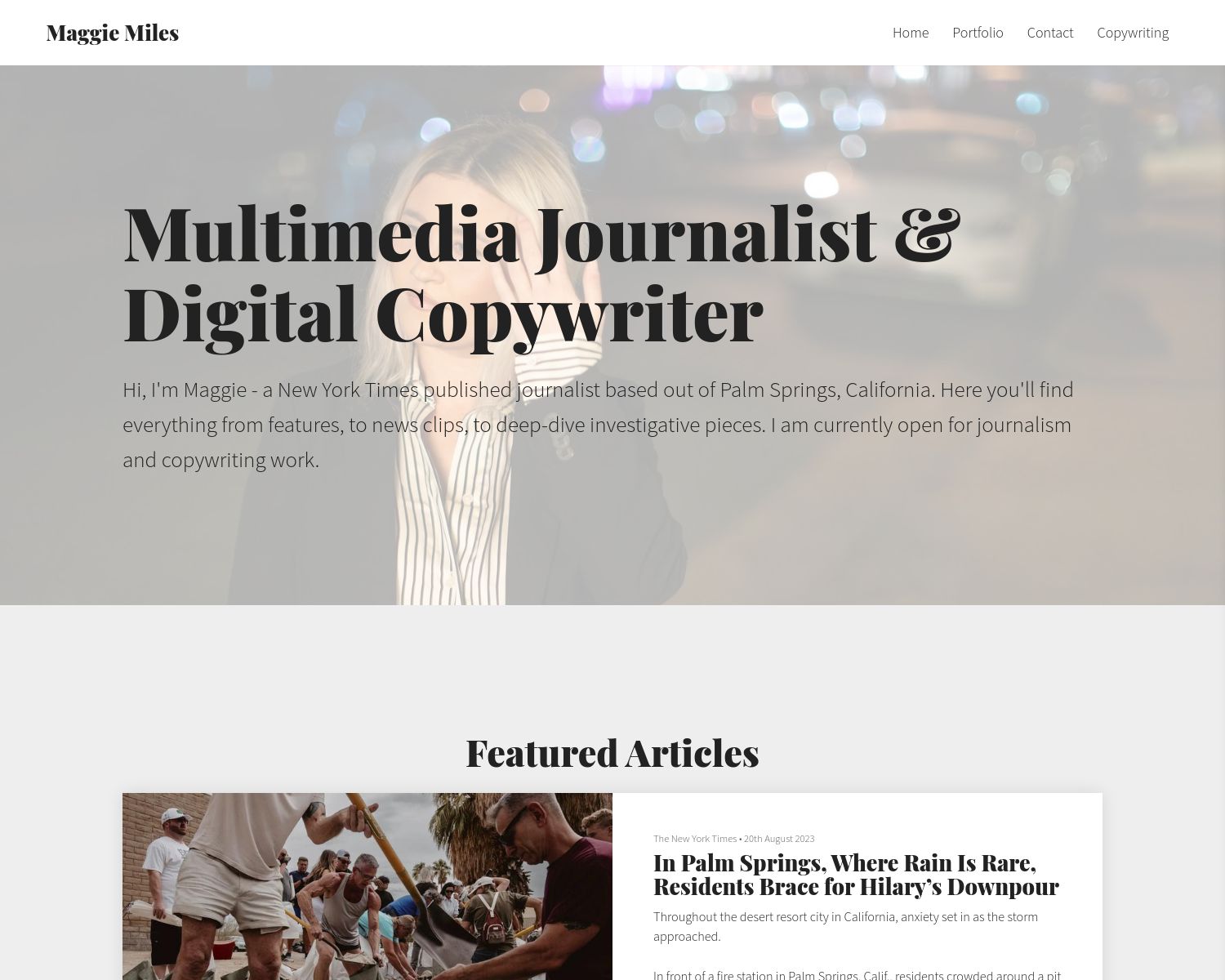
Ella Creamer - Freelance Writer
Sleek and simple: That's the strategy that Ella Creamer has taken in her portfolio. And, by the looks of it, it's quite an effective route! This is a perfect example of how freelance writers can integrate their media into a quality portfolio. With a simplistic design and an eye-catching, bright blue background, this memorable website resonates.
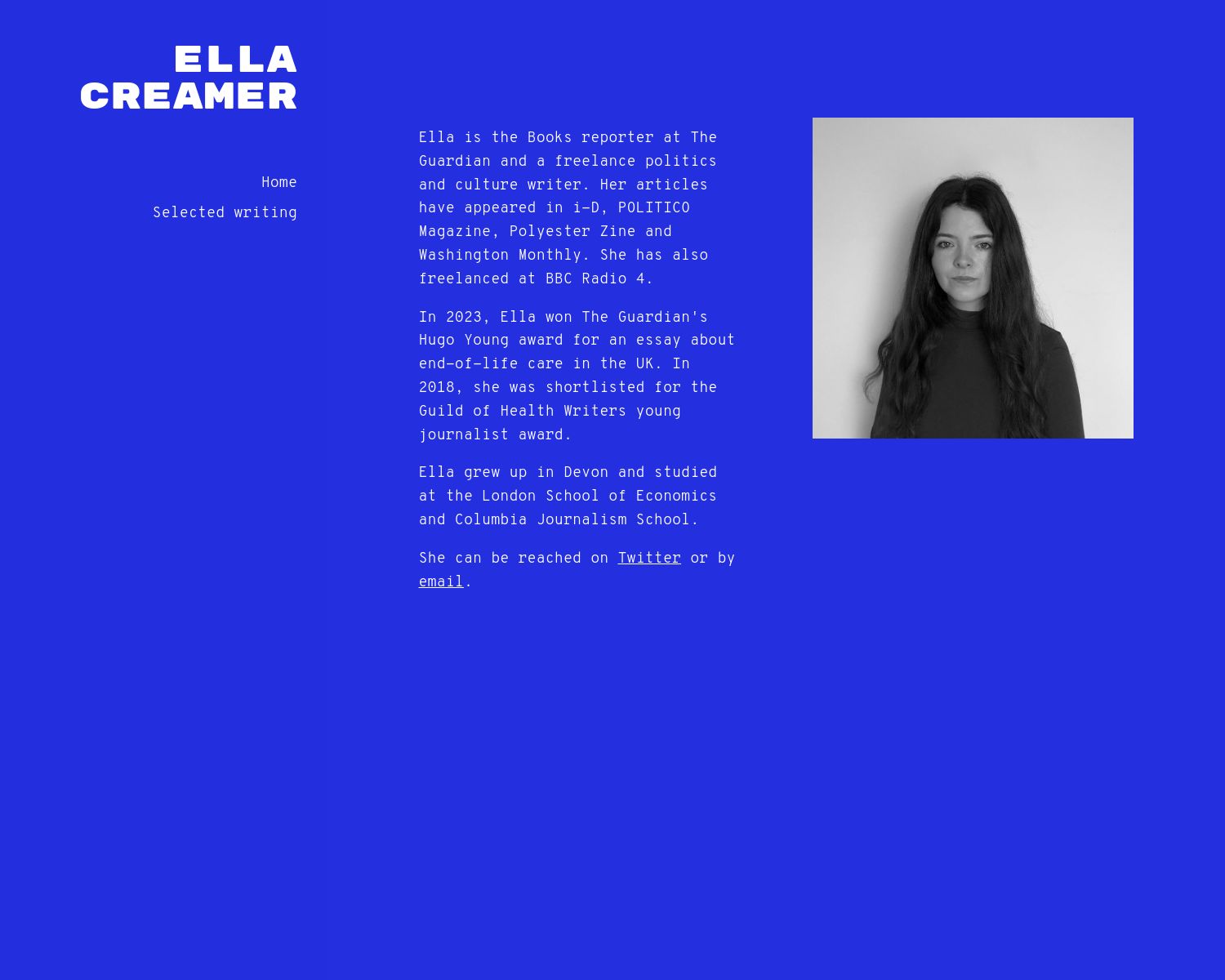
Orji Sunday - Freelance Journalist
Orji's portfolio website is a great example of using sub-pages to your advantage. In his "specialized reporting" tab, Orji has all of his niches categorized separately. By using these categories, his potential future employers know exactly where to click to see the content most relevant to them and their particular needs.

Nicole Jao - Energy Reporter
Speaking of categories, energy reporter Nicole Jao has taken an excellent approach to separating her work by media type. She can compartmentalize her niches and showcase her versatility as a reporter by having pages dedicated explicitly to podcasts, video content, and stories.
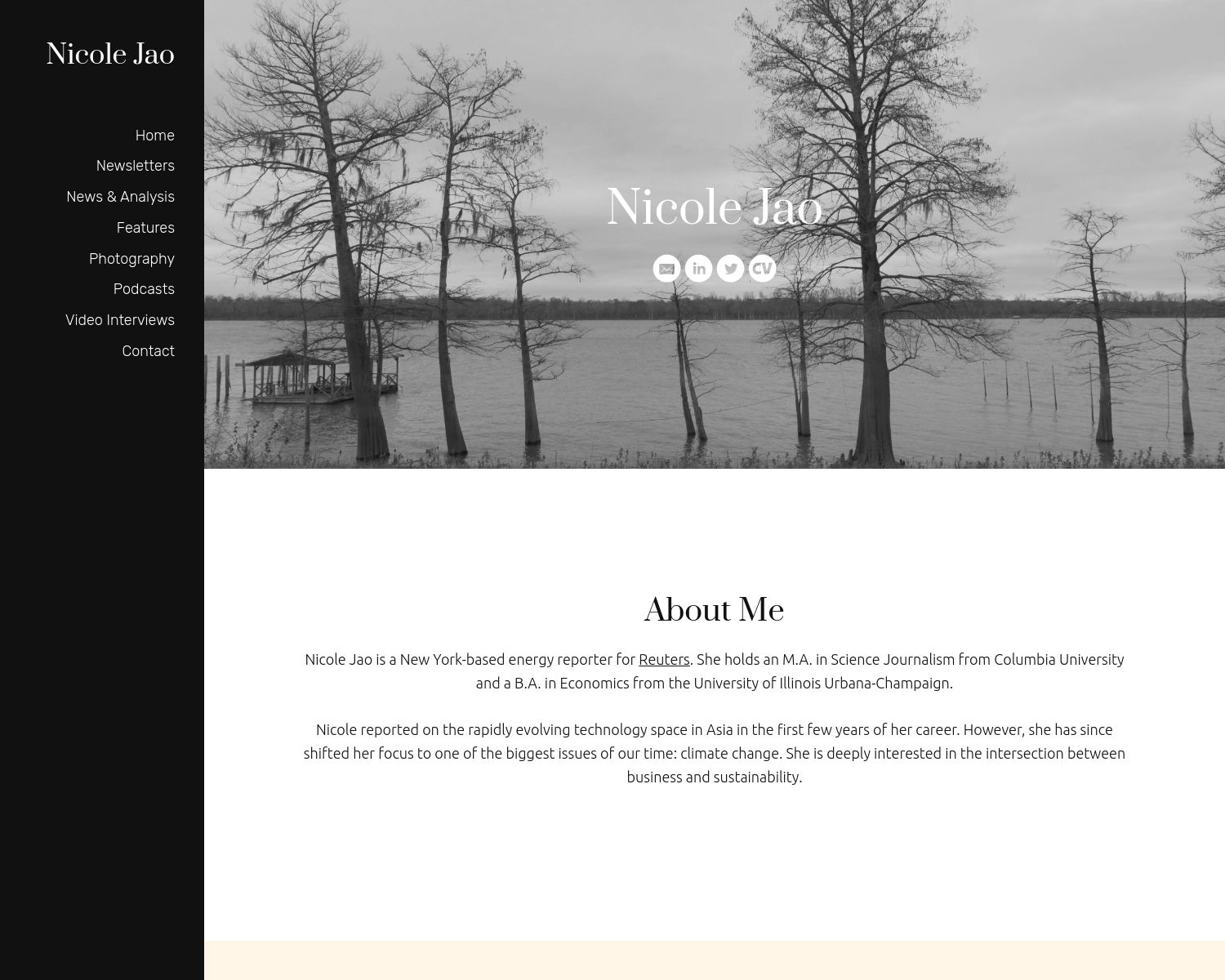
Sarah Handyside - Freelance Journalist
Beginning her portfolio with a detailed biography, Sarah Handyside places her credentials and experience at the forefront of her website. Then, as you scroll, you're presented with her best pieces of work. Portfolios, in general, are meant to sell you as a journalist. By presenting her abilities first and foremost, she takes advantage of your immediate attention.
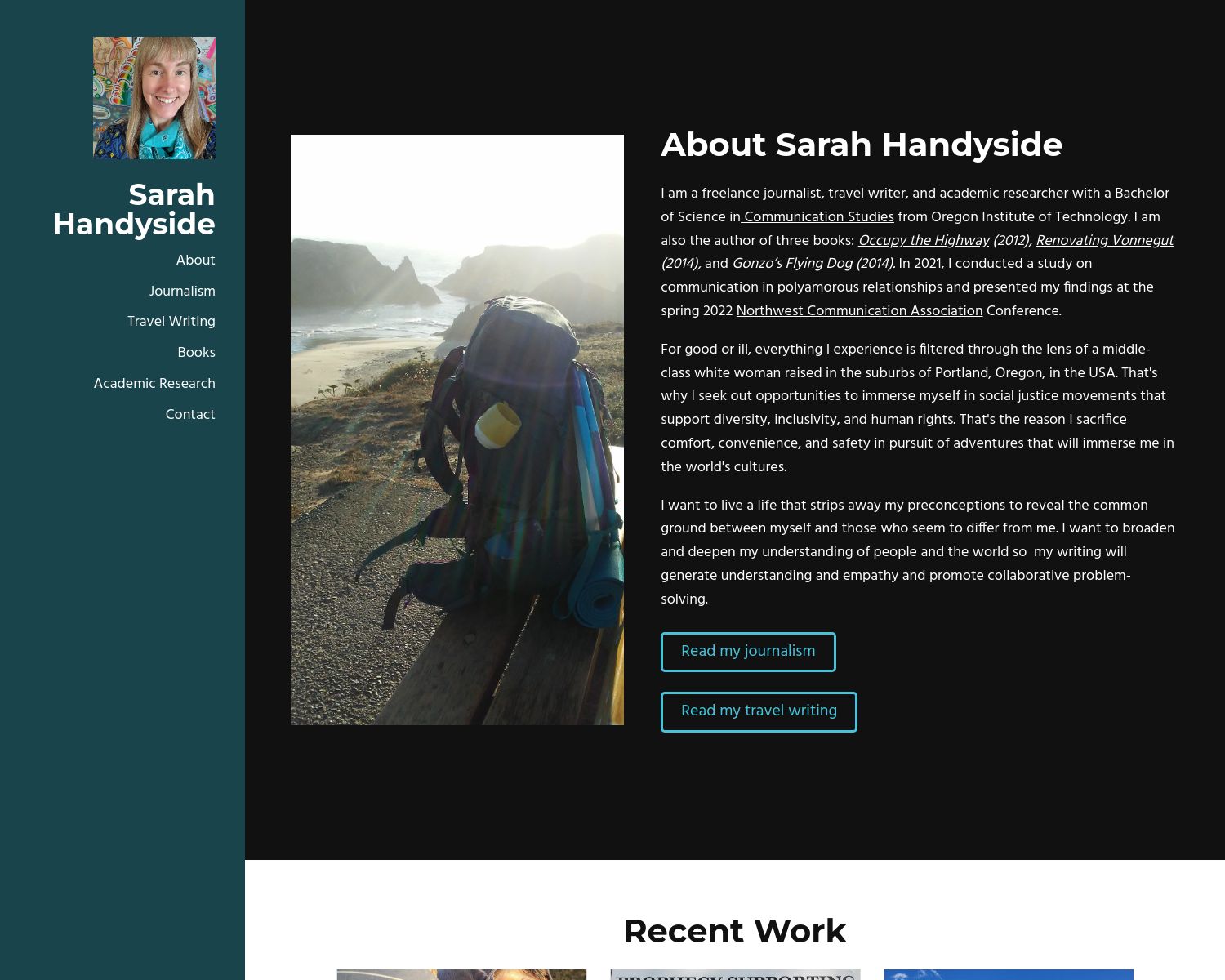
Kaitlyn Wilkes - Journalist
At first glance, Kaitlyn Wilkes makes it clear that she is based in Austin, Texas. Though not all journalists, especially freelance journalists, will need their location to be spotlit in their portfolio, this is a strategic advantage for Wilkes, as her location is her niche. Nearly all of her stories are based in/written about Austin, making highlighting her proximity so important.
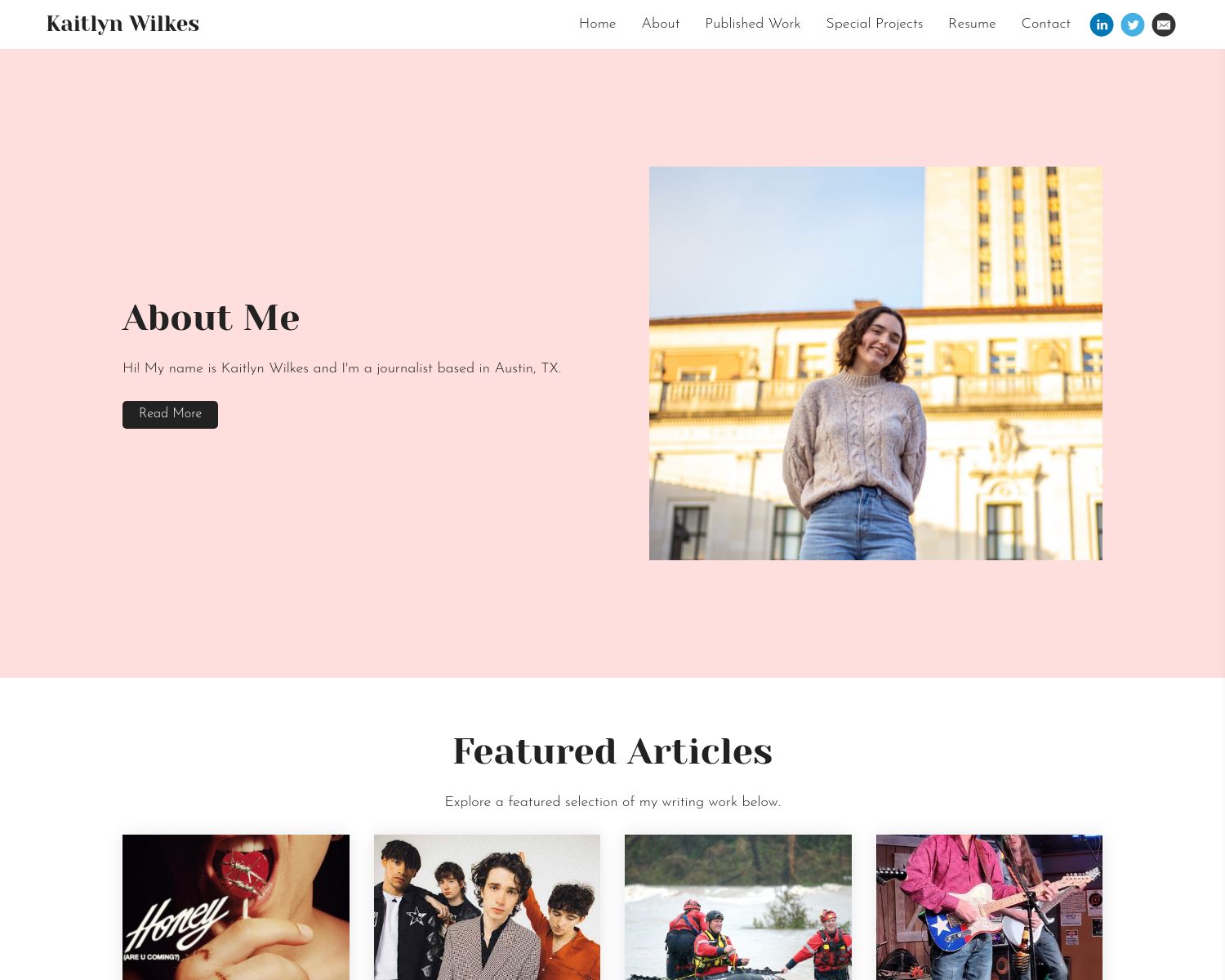
Rhi Storer - Press Officer
It is always a good idea to have a target audience in mind when creating your website. For Rhi Storer, it is blatant that her niche is politics. Taking a black-and-white, simplistic approach creates an immediate impression of professionalism. Her "about" section is at the head of her portfolio, so you have a solid grasp of her work history before delving into the publications she has written for.
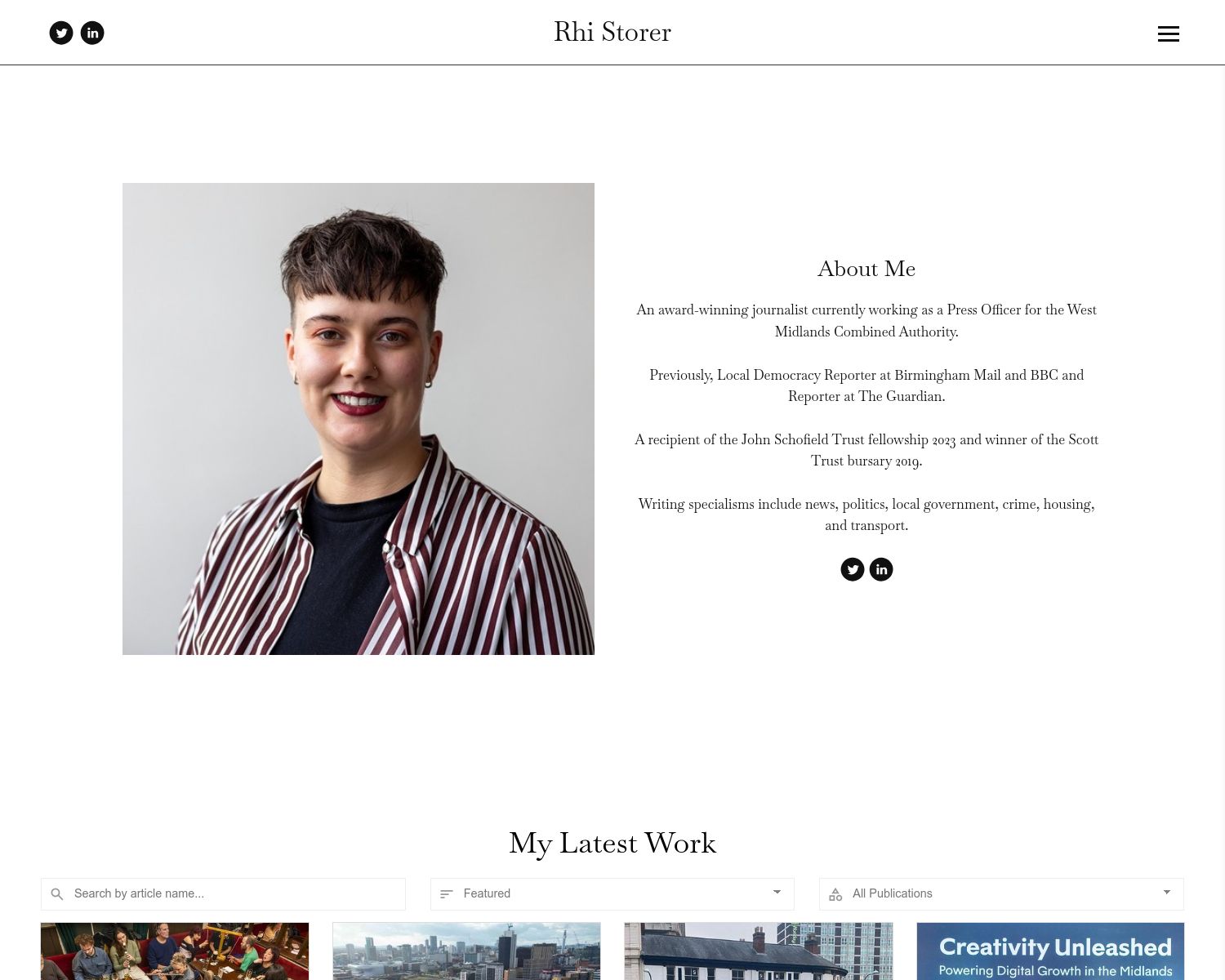
Kerry Parnell - Fashion Reporter
Much like Orji's portfolio, Kerry Parnell understands how important it is to divide up one's work into categories. Saying that you are a "fashion reporter" is one thing, but to divvy up that experience into observable niches is an important step to differentiating yourself and your abilities from the competition. Parnell does this seamlessly in her portfolio.
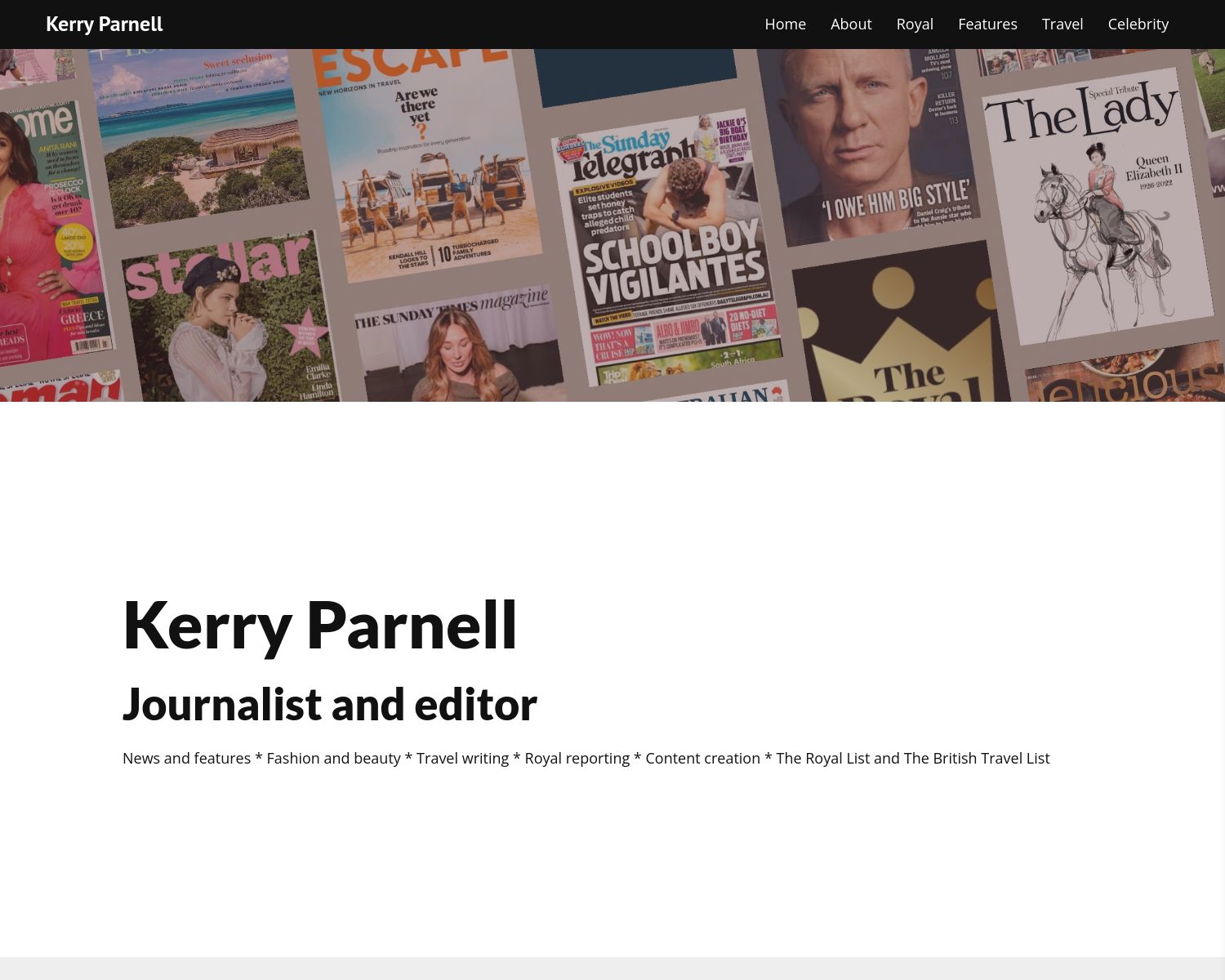
Mohua Das - Journalist
Mohua's portfolio website is a great example of personal branding. Instead of a traditional headshot, Mouha uses a gorgeous work of art as a primary image. By using these small details to your advantage, you can cultivate an impression of what kind of writer you are before someone even reads your work!
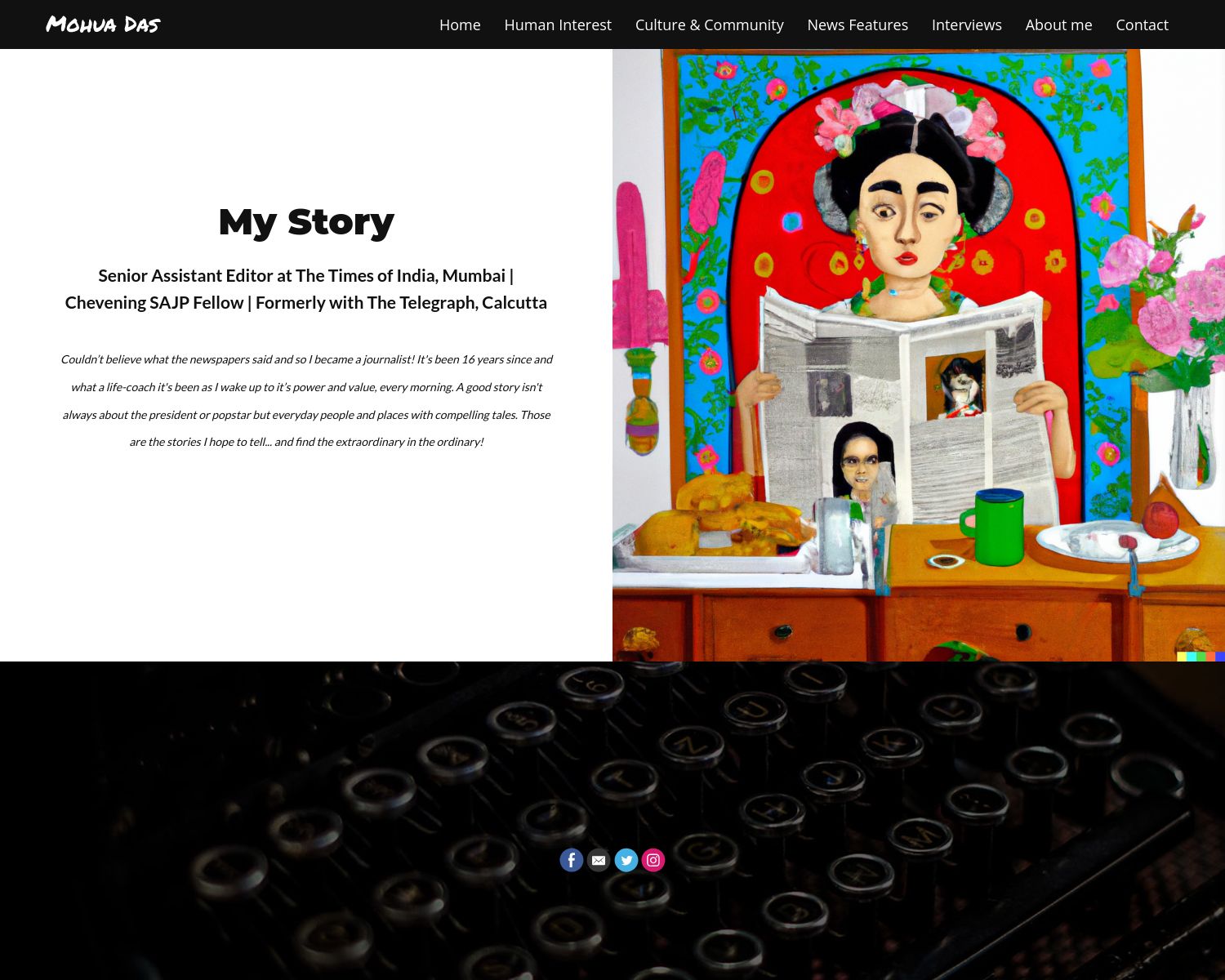
FAQs
How Can I Ensure My Journalism Portfolio Reaches the Right Audience?
Optimize your portfolio for search engines by:
Incorporating relevant keywords, such as your name, journalism, and your specialization.
Sharing your portfolio on professional networks like LinkedIn and Twitter.
Engaging with your audience via comments or direct messages can also increase your portfolio's reach and impact.
How Can Students Create a Media Portfolio to Enhance Their Journalism Skills?
Students can start by gathering their best writing examples, including articles, blog posts, and videos. Using free portfolio websites or ones with advanced features available for a fee, they can utilize templates to arrange their work attractively, focusing on quality and diversity. Incorporating feedback from peers and professors can further refine their portfolios and help them to stand out.
Are There Any Free Tools or Resources to Help Create a Professional Journalism Portfolio?
Yes, there are plenty of free resources available online! Websites like Adobe Express and Canva offer free templates and design tools to help you create stunning portfolios. Platforms like LinkedIn and Medium can also serve as spaces to publish your work and gain visibility independently.
Create Your Journalism Portfolio Today With Journo Portfolio
Now that you have all the information you need to put together a stellar journalism portfolio, all that's left is to create it! While there are endless portfolio hosting options, you have to choose one that makes the process as seamless as possible.
Journo Portfolio prides itself on balancing ease of use and potential for customization, making it one of the best portfolio builders online. It's in the name, after all! Check out our complete list of features, and get started with your free account today.
